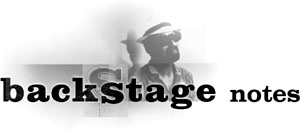 |
 |
|
|||||||||||||||||||||||||||||||||||||||||||||||||||||||||||||
 |
|||||||||||||||||||||||||||||||||||||||||||||||||||||||||||||||
| Hooked
on blues:
Can you remember the first records you ever bought? For me, the first 45s were Sam Cooke’s "I’ll Come Running Back to You" and Buddy Holly’s "Oh Boy." My first LPs, purchased in the small but impressive record section in the back of Luskin’s discount appliance store in Baltimore, were The Kingston Trio (yeah, the one with "Tom Dooley") and Harry Belafonte Live at Carnegie Hall. My first blues album, acquired mostly out curiosity about names I’d heard of but never listened to, was on one of those el cheapo labels they used to sell in grocery stores and was split between John Lee Hooker and Lightnin’ Hopkins. I wish I still had that one, but in all honesty I didn’t quite know what to make of it back then and I’m not all that surprised that it slipped away onto the cosmic scrap heap of my youth. It would be a while — maybe 10 years — before I would really get into those guys, but when I did it was with a vengeance. As faithful readers may already know, John Lee Hooker was the man responsible for my blues epiphany. Given that I was shelling out my 79¢ (or whatever) for a Sam Cooke record as a 10-year-old in 1957, you know that I grew up listening to soul and R&B. And later, as a voracious reader of liner notes, I was aware that a lot of the bands I liked best — Fleetwood Mac, Cream, John Mayall, the Dead, Johnny Winter, Canned Heat — drew on the blues for inspiration. Then one night in October of 1970 I stumbled (literally) into a record store and picked up Layla by Derek and the Dominoes and Hooker ’N Heat: Canned Heat with that old blues guy who’d piqued my curiosity years before. Layla was great, of course, although it would be almost a year before it grabbed hold of the collective pop consciousness and jumped up and down all over it. On that night, though, it was John Lee Hooker, moaning and stomping his foot in time as Alan Wilson on harmonica valiantly followed his idiosyncratic lead, that riveted my attention and pointed me down the path I’m still following. In more modern terms, Hooker showed me that rock music was the flashy interface, but blues was the guts of the operating system. Flash forward to 1990, when the germ of this magazine was just beginning to take hold. Suddenly, lots of people were talking about John Lee Hooker. He had out what would become a smash record, The Healer — the first album to pair an artist known only to blues people with rock musicians who admired his music and guaranteed it would get played on commercial radio. Figuring that I was another know-nothing radio jock, his label sent me an interview with John Lee: a sheet with a bunch of questions and a cassette with Hooker’s answers. Combining that with an old publicity photo, the first cover story in the fledgling BLUES ACCESS was born. The Hook put out a string of CDs after that. He resettled in the Bay Area, watched a lot of A’s and Giants games and hot tubbed with Faye Dunaway. He made Pepsi commercials and appeared in movies with the Blues Brothers. When I finally got to meet him, at a festival in the Colorado mountains, he was a frail-looking old man sucking oxygen to deal with the altitude. Not that he was out gas, though. Despite announcing his retirement several years ago, he would still pop up at festivals and lead younger musicians in a boogie or three. He performed live just a few nights before he slipped away in his sleep on June 20. All in all, not a bad way for a bluesman to go. But that’s not how I want to remember him. I have all those ’90s discs but rarely listen to them. Current prevailing musical values to the contrary, the blues shouldn’t be pretty. Instead, I like to go back to the recordings that he made in Detroit in the late ’40s, when he was one dark, scary dude, Mr. and Mrs. White Bread’s walking nightmare. Good night, John Lee. Thanks for all the ways you touched my soul. — CW
|
|
|